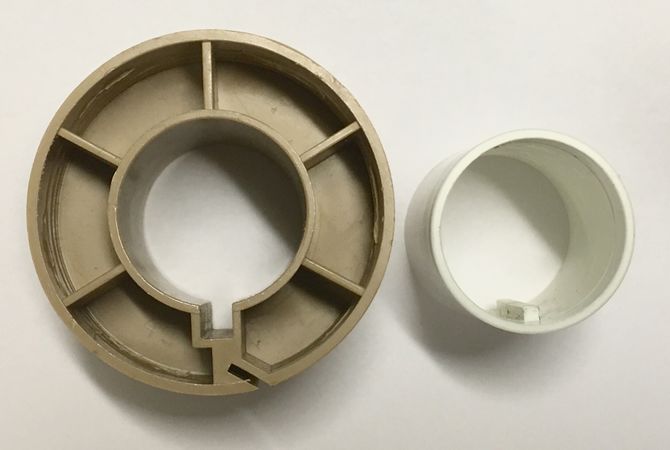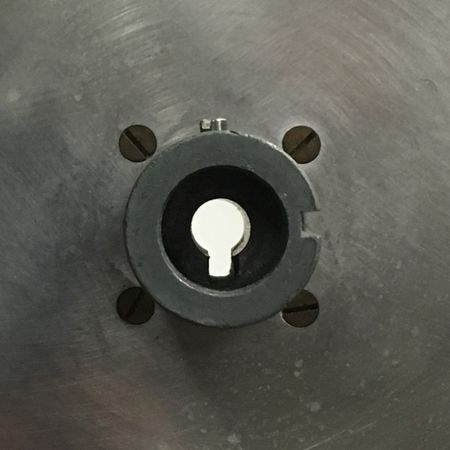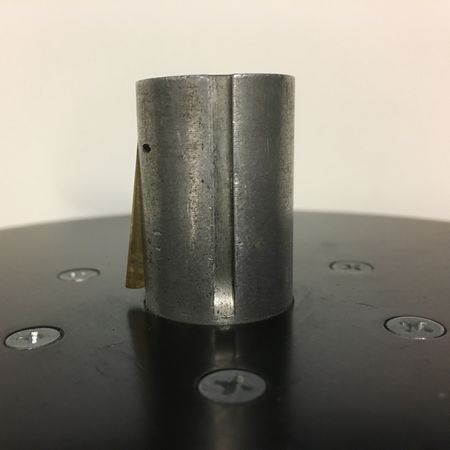| Welcome to Sprocket School! This project is maintained by volunteer editors. Learn more about how this works. |
Trailer flange
A trailer flange is used to adapt a trailer core to a rewind spindle. Once the core is seated on the flange, the film can be wound onto a reel.
Trailer cores have the same internal diameter as standard cores but they are positive-keyed (the key extends from the core), so the hub of the trailer flange has a keyway to receive them. Some trailer flanges have a removable pin or a retractable key that allows them to receive negative-keyed cores as well. Flanges that can receive both styles of core are properly referred to as film transfer flanges rather than trailer flanges.
While film transfer flanges are suitable for feeding out cored film, the lack of a flange on the operator side presents problems when winding from a reel to a flange. Because reels are thicker than the flanges, the film path is slightly out of alignment and the film will tend to telescope out from the flange towards the operator instead of spooling flat. For this reason, a split reel should be used when rewinding onto cores. Most split reels cannot receive trailer cores, but 1” trailer cores are not suitable for long-term storage and should be replaced with larger cores instead of being reused. In a non-archival setting, film being returned to a trailer core can be guided by hand to make it spool flat.
-
-
A negative-keyed 2" core and a positive-keyed 1" trailer core.
-
A Neumade film transfer flange with a keyway for 1" trailer cores and a removable pin for standard cores.
-
Goldberg trailer flange with spring-loaded retractable key for receiving standard cores.



